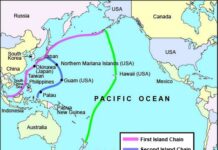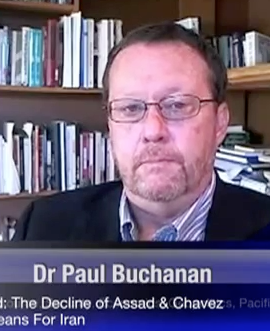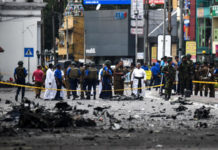Forward.
This analytic brief is derived from an ongoing study of South Pacific intelligence communities. There are numerous facets to the study, one of which is intelligence alliances and networks. The brief highlights three undervalued concepts in foreign policy practice and offers some general observations about why Western intelligence agencies reacted belatedly to the changing threat landscape that followed the end of the Cold War.
Introduction.
This essay examines three undervalued concepts in the practice of foreign policy and ties them together in a casual argument. It looks at the subject of institutional lag after foreign policy realignment occasioned by the uncoupling of security and trade, particularly as it is manifest in the Western intelligence community. The essay notes that Western intelligence agencies were slow to adapt to changes brought by post Cold War foreign policy realignments as well as broader changes in the geopolitical and technological landscape. That led them to misread or ignore threats and security concerns in light of the new stance while focusing on outdated security concepts or employing no longer relevant threat assessments. The characteristics and causes of this are outlined herein.
The brief focuses on the post-Cold War period because the Western intelligence community was deeply influenced by the Cold War, which made the latter’s termination a milestone moment in the history of intelligence. How the Western intelligence community responded to the changes wrought by the end of the Cold War and subsequent geopolitical shifts such as those occasioned by the 9-11 attacks was not necessarily foresighted, seamless or responsive to the actualities of the moment. Instead it reflected the clash between old ways of doing and seeing things and the practical necessities of coping with new technologies, areas of focus, non-traditional threats and changes in foreign policy orientation.
Institutional lag.
Institutional lag refers to the time gap between external events or exogenous conditions and bureaucratic or institutional adjustment or response.
Influenced by the work of Thorstein Veblen (1857-1929) on cultural lag, the term “institutional lag” was coined by philosopher and economist Charles Ayers in his Theory of Economic Progress (1944). “Ayres propounded a theory of “institutional lag” whereby technological changes inevitably kept economic technology one step ahead of inherited socio-cultural institutions. The process of Veblenian “evolution” Ayres envisaged was that technological changes were generated by spurts of instinctive inventive activity to innovate in technological processes but that the relatively slow, inherited socio-economic structures would be maladapted to these changes. With glacier-like gradualness, institutions would eventually respond to the new technology, but by the time they adjusted, the next round of inventive activity would have been skipping along further ahead, thus maintaining a permanent lag and thus incongruity between social structures and economic technology.” (Anonymous correspondent Phillip H. quoted in Charles Hugh Smith, Institutional Darwinism: Adapt or Perish, www.oftwominds.com, February 18, 2010).
Used as a means of explaining the delayed response of firms to technological change in a cycle of perpetual catch-up, the concept has now been expanded to include slow or belated public bureaucracy responses to cultural, socio-economic, political and diplomatic change (as well as technological change).
For example, policy shifts announced by governments as new initiatives often occur before the public agencies responsible for implementing them have undertaken the organizational reforms required to do so. When New Zealand began to promote itself as a destination for foreign students studying English and other subjects in the 1990s, it proceeded without having first put into place standards of practice and codes of fiscal responsibility for education providers as well as the monitoring and compliance mechanisms associated with them. This led to the proliferation of fraudulent language schools, forced employment of students by dubious education providers and the short-changing of students by host families with regards to room and board. It was only after these abuses were made public that the Ministry of Education introduced a regulatory framework governing the international student industry (and even to this day there is no systematic security vetting or credential validation of prospective international students—the Ministry of Education must rely on the bonafides supplied by the student and/or the authorities of the their country of origin).
Delays in bureaucratic responses to shifts in environmental conditions extend to foreign policy and security. This is particularly the case when nation-states have reoriented their international orientation due to external or internal factors (say, as the result of war, alterations in trade regimes or domestic political change). New Zealand’s response to the elimination of British export preferences in the early 1970s and declaration of its non-nuclear status in the mid 1980s are examples of external and internally motivated foreign policy realignment.
Foreign policy realignments are milestone events that can be brought about precipitously or after much deliberation. The former is often reactive to externalities whereas the latter is the product of cost/benefit calculations. Either way, the institutional apparatus underpinning the old status quo has to adapt to the change in orientation. Given the inertial weight of institutional history and tradition, that may be something that takes time, especially if confronted with bureaucratic opposition within affected agencies.
Two further syndromes compound the problem of institutional lag following foreign policy realignment. On the one hand there is the issue of institutional rippling, whereby a government opts for realignment but does not involve agencies other than those most immediately and directly affected by and involved in the shift. Whereas the diplomatic corps and foreign affairs bureaucracy are integrally involved in implementing the details of foreign policy realignment, other government agencies are slower to follow and often do so in uncoordinated and uneven fashion. This is seen in military-security agencies as well as those such as Customs and Immigration, which are often not fully involved in the decision-making process leading to a foreign policy realignment and yet have to engage organizational reforms in accordance with their own institutional traditions and structures that may not easily follow the dictates of diplomats or the pet projects of politicians.
That brings into play the second syndrome, that of institutional “depth.” Institutional depth refers to the historical legacies of institutional tradition and practice. Some public agencies, such as the police and the military, have long traditions and standards of practice that often date to the days of independence or state foundation. Others, such as agencies involved in the oversight and regulation of information technology and telecommunications, are relatively new to the scene and do not have the accumulated “weight” of institutional mores and practices to deal with when confronting significant change in their operating environments.
Institutional rippling in response to policy realignment often begins with agencies directly involved in the transition and “newer” agencies lacking in relative institutional depth, which are then followed by agencies with greater institutional depth. The overall effect is that institutional lag becomes a process as well as a distinct organizational phenomenon, with some agencies suffering less institutional lag than others depending on the level of involvement in implementing the realignment and the degree of institutional depth encountered in each.
In sum: Significant change in a nation’s foreign relations often leads to a process of institutional lag that is determined by the relative institutional depth of the agencies involved. Front-line agencies such as foreign affairs ministries and recently created agencies with connections to priority aspects of foreign relations may undertake immediate organizational reforms in response to the policy shift, but other agencies, including security and intelligence agencies, may lag behind in reorienting their institutional gaze as well as their internal conformation.
Foreign policy realignment.
Foreign policy realignment refers to a shift in a nation-state’s geopolitical and diplomatic relations. It can be the product of internal factors such as political regime change or an alteration in government perspectives on global affairs, or it can be the consequence of changes in the external environment such as the beginning or termination of conflict, the emergence of new actors, markets or areas of resource contestation, diplomatic shifts by allies or enemies, and more.
Foreign policy realignments may be sudden and/or forced upon states or they may be the product of lengthy deliberation. The end of the Cold War is an example of an external event that produced rather quick foreign policy realignments on the part of many states, while New Zealand’s decision to broaden its trade relations in the mid 1990s is an example of an internal catalyst for realignment that was deliberate and measured in light of systemic changes in the international environment over the previous decade.
Foreign policy realignment is not something that comes effortlessly or easily. Whether they are consulted in advance or not, government agencies must adapt to the change in posture. This can well involve significant organizational and discrete policy changes as well as alterations in their relationship with private sector and public interest groups, some of which may be resistant to change.
The end of the Cold War illustrates the reality of institutional lag in the wake of foreign policy realignment. Although the international community shifted from a tight bipolar to a unipolar system, many defense and security organizations, to include intelligence agencies on both sides of the Berlin Wall, continued to view the world and organize themselves according to Cold War precepts. As this proved inadequate for confronting the new security and intelligence challenges of the 1990s, only then did military and intelligence agencies begin to undertake the organizational, doctrinal and perspective changes required in order to do so.
The train has left.
Issue Linkage.
Issue linkage in international relations refers to the tying together of two or more foreign policy concerns in a “holistic” approach to bilateral and multilateral relations. Although there are many issues that can be linked, such as human rights and arms sales, here the focus is on trade and security. This was the dominant foreign policy linkage of the Cold War, whereby security partners on both sides of the ideological divide traded preferentially with each other, thereby reinforcing their alliance commitments.
After the Cold War there was a move to uncouple trade and security. This was primarily due to two factors, these being the loosening of security alliances in a unipolar security environment dominated by the United States and the globalization of production, communications and exchange connected by international commodity chains. It was believed that both security and trade relations could be de-concentrated and dispersed across a wider array of partners, thereby avoiding undue dependence on any one of them. They key to the success of this new paradigm was to ensure that the new trade and security relationships were not juxtaposed in a contrary or contradictory manner (say, by attempting to trade with a belligerent while maintaining security relations with its main antagonist). So long as that did not occur, states were free to loosen the linkages between their trade relations and national security.
Issue linkage and issue uncoupling are types of foreign policy (re)alignment, and it is here where the problem of institutional lag often becomes evident in the intelligence community. That is because intelligence agencies that had previously viewed the world through the “holistic” prism of linked security and trade often have a difficult time adjusting to the new realities of their uncoupling, particularly when trade and security relations become juxtaposed in contrary or contradictory fashion.
Causes.
There is a chain of causality at play here. The independent variable is the decision to engage in a foreign policy realignment. The intervening variable is issue linkage or uncoupling. The dependent variable is institutional lag. In layman’s terms, the issue is thus: Regardless of whether it is precipitated by internal or external factors, or is sudden or slow, foreign policy realignment shifts the state’s international orientation. The decision to realign foreign policy is filtered and mediated by the types of linkages between two or more discrete foreign policy areas, which in turn influences whether and how institutional lag occurs in the agencies responsible for implementing policy in those areas.
Where it has occurred, institutional lag in Western intelligence communities after foreign policy realignment is the product of four general factors: over-reliance on allied intelligence streams for information; subservience to allied intelligence requirements and priorities; limited autonomous signals and human collection capabilities; and misplaced focus. The combination saw the majority of the Western intelligence community respond reactively rather than proactively to the emerging threat environment that followed the end of the Cold War.
Institutional lag also appears to derive from three organisational pathologies that are particularly evident in the intelligence community: bureaucratic insulation, inertia and capture. Intelligence agencies were until recently very insulated from outside scrutiny, to include that of the elected officials responsible for their oversight and direction. This allowed them to conduct their affairs and determine their priorities in a relatively unchecked and unaccountable way, to include engaging in operations that stretched the boundaries of their legal charters.
In part this was due, and in turn contributed to, bureaucratic inertia. That is a situation characterized by organizational complacency and resistance to change or outside advice. Much of this was rooted in Cold War recruitment patterns and institutional perspectives that favored a specific demographic status quo within intelligence agencies and a particular strategic perspective within them. But it was also seen in an adherence to institutional tradition, culture, processes and procedures. The overall mindset was one that emphasized group cohesion and shared perspectives and logics that placed a career premium on “team players” rather than those who might challenge the received wisdom of the status quo.
Conclusion.
The combination of external dependency, limited capability and internal conformity contributed the most to institutional lag within Western intelligence agencies after the Cold War. Added to that was the significant depth of organizational culture and practice within these agencies, one that was resistant to change and focused on either domestic threats or the external concerns of allied intelligence partners as much if not more than their own.
The end result is that Western intelligence agencies were slow to react to the looming theat on non-state irregular extremist warfare, and when they did they so in over-reactive fashion to what is, regardless of the atrocities committed, not an existential threat to any liberal democracy. Likewise, they were technologically ill-prepared and organisationally ill disposed to see the threat of cyber warfare until it was well advanced. The result was a game of catch-up during the early 2000s when it came to marshalling resources against irregular and cyber threats, a process that is ongoing.















